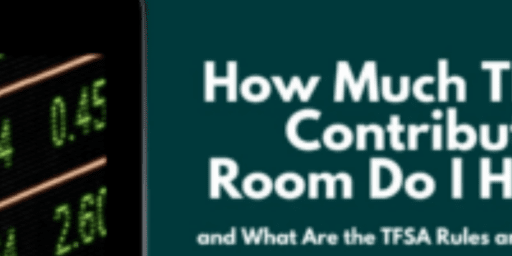Smith Manoeuvre Portfolio – April 2008
Since the beginning of MDJ, I have talked about the Smith Manoeuvre. For those of you just joining us, The Smith Manoeuvre is a wealth strategy that utilizes a home equity loan to invest in income producing assets. The result is a tax deductible loan and portfolio that increases as you pay down your mortgage.
There are quite a few Smith Manoeuvre strategies out there. The plain jane SM strategy involves investing the small credit line increases into tax efficient mutual funds. For me, I’m doing a slight twist where I’m going to use the credit line increases to fund the investment loan, thus giving me a larger lump sum to start with. Along with that, I’m going to invest in purely strong dividend paying stocks which meets the CRA “income” requirement and giving me tax efficient income to boot.
The dividends will then be used to further pay down the mortgage. If this strategy works out, according to the Smith Manoeuvre Spreadsheet, I should have my $150k non-deductible mortgage paid off in under 10 years. At that time, hopefully my dividends will have grown to the point where they can service the underlying investment loan in addition to buying me steaks when I’m feeling carnivorous.
Onto the portfolio. With the markets in it’s current state, who knows where the financials are going. I’m a little bit on the nervous side, so I’ve been simply dabbling in stocks that appear cheap to me. As you can see from the portfolio below, it’s extremely overweight in financials. I plan to diversify into energies and utilities as they (hopefully) come down in price.
| Stock | Symbol | Shares | Avg Buy Price | Total | Div/Share | Avg Yield |
| Royal Bank | RY.T | 50 | $47.23 | $2,361.25 | $2 | 4.24% |
| CIBC | CM.T | 45 | $67.14 | $3,021.25 | $3.48 | 5.18% |
| Power Financial | PWF.T | 50 | $35.57 | $1,778.50 | $1.25 | 3.51% |
| Scotia Bank | BNS.T | 25 | $44.85 | $1,121.25 | $1.88 | 4.19% |
| Manulife Financial | MFC.T | 25 | $38.78 | $969.50 | $0.96 | 2.48% |
| Fortis Properties | FTS.T | 50 | $27.30 | $1,365.00 | $1 | 3.66% |
| TransCanada Corp | TRP.T | 25 | $36.74 | $918.50 | $1.44 | 3.92 |
You might be thinking that I’m crazy for buying such small lots, but since I have a bunch of free trades with Questrade to use up, why not?
Hopefully, these updates are interesting to you. If there is something that you would like added to the table above, let me know and I’ll see what I can do.










I have also been researching different dividend based options for use with the SM. After digging a bit into XDV and CDZ, I found that even though their yields look fairly attractive, the distributions are not 100% dividends. The 2007 distribution breakdown is as follows (approximately):
XDV:
71% eligible dividends
18% ROC
11% capital gains
CDZ:
51% eligible dividends
10% ROC
39% income (includes non-eligible dividends)
I also decided to check RBC’s Canadian Dividend Fund. Since I am an RBC Direct Investing client, the MER on this fund is 1.16% (much lower than the Series A MER of 1.70%) – fairly good for an actively managed fund that has beat its index over the last 10 years. One thing I couldn’t figure out was that the dividend distribution of this fund seems quite low for a dividend fund. For 2007 the distributions were:
1.93 capital gains
0.21 dividends
http://www.rbcam.com/pdf/information/seriesd/drmfdiv.pdf
Does anybody know if the MER is deducted from the dividends? I can’t figure out how the dividend distribution could be so low otherwise.
I’ve been doing this for over a year now. Here are my personal findings for what it’s worth.
First, I had a portfolio similar to yours and it got obliterated when the market corrected last year, luckily(?) I did some day trading and recovered my losses.
Holding individual stocks I’ve found that it’s too much for me to reinvest the dividends as the trading costs reduce my dividends far too much (9.95 @ BMO).
So I’ve switched to 4 MF’s.
1. Dynamic Global Dividend
2. RBC Global Dividend Growth
3. Saxon High Income
4. Sceptre High Income
Hopefully the global will offset any Canadian corrections… which I hear rumblings another is afoot.
True I’m paying a bit with the MERs there but it allows me to roll the dividends back into the investments at a smaller cost than the trading fees.Compounding is your friend.
Hi Dan,
I agree with FT that you should avoid funds or income trusts that pay out ROC. This would include the income trust ETF and REIT’s. If you buy any of these, reinvest the entire distribution. Don’t pay any of it onto your mortgage.
You should also be careful with the bond and money market ETF’s. You should also have a reasonable expectation of profit to maintain your interest deductibility. With these 2, it is obviously unreasonable to expect them to make as much as the interest cost.
Why would you buy them with borrowed money anyway, since it is essentially a guaranteed loss?
Ed
Hi Sarlock,
Your 2nd situation is right. Record the dividend income just like you normally would, and then deduct the interest.
Ed
Arg, I’ll have to retract some of my ETF picks. According to this (http://tinyurl.com/5s8dga), CPD is about 40% ROC and CDZ is about 10%. Not ideal.
I think you can still use funds containing ROC, but you just have to keep ROC distributions in the investment or put them towards the investment loan if you do withdraw it. Unfortunately you don’t know what these ETF dividends actually consist of until you see the year end statement or get your T-Slips.
Dan.
Dan, thank you for a good info.
Dan, some of your options seem decent for the SM. I would question the funds that have any ROC distributions and interest as both would reduce the effectiveness of the SM with regards to taxation.
Sarlock, the dividends do not need to exceed the interest claimed in order for the interest to be deductible. Perhaps try playing around with the tax calc on taxtips.ca to find the specific answer to your question.
Perhaps a resident tax expert can chime in?
A tax related question that perhaps someone will know the answer for.
When deducting HELOC interest against your dividend income, how does the calculation get performed? Dividends (elligible) enjoy a 145% gross up and subsequent reduction with regard to taxes, but I assume this does not apply when using it against an interest expense.
So, in an example with $1,000 in dividends and $1,200 in interest expense, how does it work?
Income: $1,000
Interest: $1,200
Net income for tax: $0 ?
or
Income: $1,000 x 145% = $1,450
Interest: $1,200
Net income for tax: $250 ?
And then the reduction applies afterward to the $1,450: 18.9% for Canada tax, plus Provincial amount (which varies by province). This would result in a net tax refund for your dividend investments.
If the first scenario applies, then it seems you lose the tax advantage of dividends.
I have set up a SM spreadsheet for use for when I execute the strategy, but I am having difficulty completing the final stage of the computation (the tax part).
I’ve been doing research lately on ETFs that would be good for SM, and this article would seem to be a good place to deposit my results and ask for feedback. Here it goes:
Claymore CDN Dividend & Income Achievers (CDZ) – As already mentioned here, a good dividend fund with about 40% in financial instituations.
Claymore S&P/TSX CDN Preferred Share (CPD) – Good dividend at the moment, and because they are from preferred shares I expect the yield to remain more stable through good and bad times. 81% financial institutions.
One that almost tempted me was Claymore Canadian Financial Monthly Income (FIE), which currently has a yield of over 7.5%. Upon reading the fine print it has a very high MER at 1.65%, and the dividend is fixed. If times are tough, the dividend will contain ROC. If times are great, excess underlying dividend will presumably be reinvested. Suboptimal in many ways for the SM.
I also had a very hard time diversifying from Canadian financials because everything else just doesn’t have the yield. To alleviate diversification guilt, I am thinking my portfolio should hold at least some of these:
Claymore 1-5 Yr Laddered Government Bond(CLF) – Bonds, currently yielding about 4%, but it is all interest (bad for tax)
Claymore Premium Money Market (CMR) – Money fund, even lower yield, but at least it’s something different.
iShares CDN Income Trust Sector Index Fund (XTR) Yields about 4.4% of mostly interest. Is about 60% oil/gas and the rest mostly non-financial.
If any of these look like stupid moves, please tell me. :)
My intention is collect quarterly revenues from these ETFs and blam them straight into my mortgage. The tax refund on the LOC should cover the tax on the revenues with some to spare (which will also go into my mortgage). I won’t buy ETFs monthly because I don’t want to incur lots of brokerage fees, and my LOC isn’t automatically readvanceable anyway (Credit Union). Maybe once a year I would advance my LOC and buy more ETFs.
Dan.
Is that PST, central/mountain, EST or Newfoundland time?